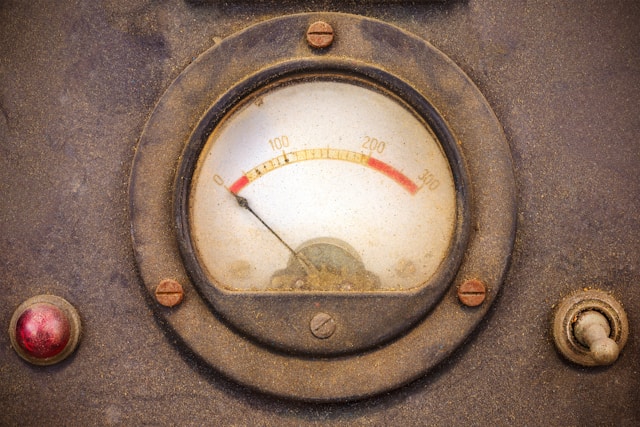When it comes to choosing the right HVAC system for your space, sizing matters—a lot.
Getting the right fit isn’t just about comfort but efficiency, energy savings, and long-term costs. That’s where HVAC load calculations come in. They help you determine the ideal size and type of system your space needs, ensuring your HVAC runs smoothly without wasting energy.
Have you ever cranked the thermostat up because your home never seems to stay the right temperature?
It might be due to an oversized or undersized system that doesn’t match your actual needs. This is where the magic of precise calculations comes into play. Whether you’re remodeling your home or handling a large commercial project, understanding your HVAC load can make all the difference.
At Excel Mechanical, we specialize in tailoring HVAC systems that perfectly fit your space, needs, and budget. Our expert team is committed to delivering high-quality service, ensuring your system’s efficiency while balancing comfort and cost.
When you work with us, you choose a partner who cares about getting the best performance from your system.
In this blog, you will learn:
- The fundamentals of HVAC load calculations, including how heat transfer works and why it’s essential.
- The types of loads that impact your HVAC system’s efficiency, and how to account for them.
- How to accurately gather building information to perform room-by-room load estimates.
Ready to dive into the world of HVAC load calculations?
Let’s break down the essentials and discover how precise sizing can keep your space comfortable and your bills low.
Fundamentals of HVAC Load Calculations
To effectively size HVAC systems, you must grasp the principles of heat transfer, explore various load calculation methods, and understand the different types of loads involved. These fundamentals ensure the system meets energy efficiency and comfort standards.
Understanding Heat Transfer Principles
Heat transfer involves three main processes: conduction, convection, and radiation.
- Conduction occurs when heat moves through materials like walls and roofs. Think about how your hand warms up next to a warm wall.
- Convection involves the movement of air. For instance, warm air rising and cooler air descending create a natural circulation.
- Radiation is heat traveling through space, like sunlight warming a room. Recognizing these processes is key.
The way heat transfers in your building affects the HVAC system sizing. Proper insulation reduces heat gain or loss, which is essential for maintaining comfort. Keeping these principles in mind helps optimize HVAC performance, saving energy and costs while offering a comfortable environment.
Methods of Load Calculation
Several methods exist for calculating HVAC loads.
- The Manual J method is widely used for residential load calculations. It evaluates each room’s heat gain and loss, considering window size, insulation quality, and occupant activity.
- Commercial buildings often use more complex methods. These may involve software tools that account for building dimensions, usage patterns, and equipment types.
The precision of these methods ensures that the HVAC system is neither over- nor undersized, ultimately providing greater energy efficiency and occupant comfort.
Types of Loads in HVAC Systems
HVAC systems face different loads, mainly sensible and latent.
- Sensible load refers to changes in temperature only, like a cooling system that lowers the air temperature.
- Latent load involves moisture, such as removing humidity from the air.
- Internal loads, including occupants, machinery, and lighting, come from within the building.
- External loads are due to outdoor conditions, like sunlight and outside air temperature.
Understanding these load types and their sources is vital. It enables the configuration of a system that effectively maintains temperature and humidity levels, fostering comfort and improving energy efficiency.
Gathering and Analyzing Building Information
Gathering comprehensive information is essential to determining the correct HVAC load for a building. Key factors include building orientation, construction, occupancy patterns, and local climate data.
These factors will help ensure the heating and cooling system meets your specific needs.
Building Orientation and Construction
The way a building is positioned affects how much sun it gets.
South-facing buildings might need more cooling in the summer, while north-facing ones can require more heating in the winter.
Materials used in the walls, roof, and windows also impact energy efficiency. Insulated materials help keep a building warmer in the winter and cooler in the summer.
Knowing the materials and exposure can help you better predict energy needs.
Occupancy and Usage Patterns
How a building is used and how many people occupy it affect HVAC requirements.
Buildings with many people during peak hours may need additional cooling because people generate heat.
Understanding how spaces are used can also help adjust HVAC settings. For example, a meeting room might have different needs than storage spaces.
It’s essential to analyze these patterns to ensure comfort and efficiency.
Local Climate Data Considerations
Weather patterns in your area play a crucial role in HVAC sizing.
Areas with extreme temperatures will have different needs than those with mild climates. Look at historical weather data to understand your area’s typical temperature range and humidity levels.
Considering the climate helps design a system that can handle temperature variations. Excel Mechanical is dedicated to analyzing all these factors, ensuring that your HVAC system is perfectly sized and efficient.
Performing Room-by-Room Load Estimates
Room-by-room load estimates ensure that each space in a building gets the right heating and cooling needed. This method improves comfort and efficiency by focusing on the unique factors of each room.
Importance of Room-Level Detail
Understanding the specific needs of each room helps in designing an efficient HVAC system.
Rooms may have different sizes, insulation, window areas, and orientations, affecting their heating and cooling needs.
An office with many windows facing the sun requires different considerations than a basement room. Precise calculations can prevent overworking HVAC units and lead to energy savings by matching equipment size to the actual demand of each room.
Process of Room-by-Room Load Calculations
Start by measuring each room’s size (length, width, height).
Note window and door areas, insulation quality, and room function (bedroom, office, kitchen). Calculate the heat gain or loss due to windows, walls, and occupancy.
Use these details to determine the British Thermal Units (BTUs) needed to heat and cool each room. Remember that professional services like Excel Mechanical specialize in performing accurate load calculations tailored to your building’s needs.
Selection and Sizing of HVAC Equipment
Choosing the right HVAC equipment involves careful consideration of size and efficiency. Equipment should be aligned with both immediate and future needs to ensure optimal performance and cost savings.
Matching Equipment to Load Requirements
Matching equipment to load requirements is crucial. Proper sizing prevents issues like short cycling, reduces efficiency, and increases wear.
Steps to Match Equipment:
- Conduct Load Calculation: Determine heating and cooling needs using methods like Manual J.
- Consider Building Size: Larger spaces need more powerful systems.
- Factor in Climate: Location impacts heating and cooling demands.
- Evaluate Building Insulation: Well-insulated buildings maintain temperature better, reducing load.
Efficiency and Cost-Effectiveness
Efficiency impacts long-term costs. Invest in energy-efficient systems to save money over time.
Key Factors for Cost-Effectiveness:
- Energy Ratings: Check SEER (Seasonal Energy Efficiency Ratio) for cooling and AFUE (Annual Fuel Utilization Efficiency) for heating.
- Maintenance: Regular service keeps systems running efficiently.
- Initial Investment vs. Long-Term Savings: Higher upfront costs often mean better energy efficiency.
Best Practices for Accurate Load Calculations
Accurate load calculations ensure an HVAC system meets your needs efficiently. This section covers tools to enhance precision and points out common pitfalls to avoid.
Utilizing Software Tools for Load Calculations
Modern software tools make HVAC load calculations more precise.
These tools use algorithms that consider building size, insulation, and local climate. By entering detailed information about your space, you get accurate results faster than manual methods.
Using tools simplifies complex computations and reduces errors. Some popular options include programs integrating with 3D modeling software, which helps visualize heat loads in various scenarios. This approach offers more control and accuracy.
Common Mistakes to Avoid
Mistakes in load calculations can lead to oversized or undersized systems, affecting comfort and efficiency. Oversized systems cycle on and off too frequently, wearing out faster. Undersized systems struggle to maintain temperatures, increasing energy use.
Avoid relying solely on rule-of-thumb methods. These can overlook crucial variables such as specific building layout and material quality. Ensure you input detailed and current data into your software, checking insulation types and window orientations.
It is also important not to overlook maintenance considerations. Well-maintained systems operate more efficiently.
Impact of Ventilation and Infiltration
Ventilation and infiltration play significant roles in determining HVAC load. Proper calculations ensure efficient performance, minimizing energy waste while promoting comfort.
Calculating Infiltration Rates
Infiltration involves outside air unexpectedly entering through leaks and gaps in a building.
Correctly estimating this rate is crucial for accurate HVAC sizing. Factors to consider include the building’s construction quality and local wind conditions. Infiltration can significantly affect heating and cooling loads, requiring adjustments to system capacity.
Common methods for calculating infiltration include blower door tests and examining air change rates. By accurately estimating these rates, HVAC systems can be tailored to effectively maintain desired indoor environments.
Considering Ventilation Requirements
Ventilation is the intentional introduction of outdoor air into a building. It’s vital for maintaining indoor air quality, reducing pollutants, and ensuring sufficient oxygen.
Different spaces require varying levels of ventilation based on usage and occupancy. Balancing these needs without excessive energy use is a key focus. Mechanical systems or natural methods might provide ventilation, each having different impacts on energy efficiency.
Accurate ventilation calculations help optimize HVAC systems, ensuring both performance and comfort.
Incorporating Renewable Energy Sources
Using renewable energy in HVAC systems can lower costs and enhance sustainability. Effective use of resources like solar gain can significantly impact HVAC systems’ efficiency and size.
Solar Gain and Its Effects on HVAC Sizing
Solar gain refers to the increase in temperature inside a space resulting from sunlight entering through windows or other openings.
It can significantly affect the size of your HVAC system. Properly assessing solar gain ensures your system isn’t oversized or undersized, providing better comfort and energy efficiency. Using materials with low solar heat gain coefficients for windows can help control this effect. This means less strain on the HVAC system and can lower energy bills.
Be mindful of building orientation and window placement to maximize or minimize solar gain, depending on the climate.
Integrating Renewable Energy Solutions
Integrating renewable solutions like solar panels can reduce reliance on traditional energy sources.
Solar panels can power part or all of your HVAC system, reducing electricity costs. Moreover, pairing solar panels with storage solutions can maximize benefits by storing excess energy for later use.
With our team, you can ensure the best solution tailored to your specific needs and budget. We provide exceptional quality and value, making us the top choice for both residential and commercial projects.
Each system is designed with precision to maximize efficiency and savings.
Legislation and Building Codes
Navigating HVAC load calculations means understanding regional standards and ensuring compliance with energy codes. Adhering to these guidelines guarantees efficiency and legal conformance, essential for residential and commercial projects.
Understanding Regional Standards
Different regions have unique standards for HVAC systems.
These standards ensure that systems operate safely and efficiently in specific climates. For example, northern states might have regulations focusing on heating, while southern states emphasize cooling.
Familiarize yourself with local requirements to avoid potential issues. This means checking state-specific guidelines and regulations. Standards may include rules about materials, installation methods, and system capabilities.
Knowing these can prevent future complications and ensure your system suits local demands.
Compliance with Energy Codes
Energy codes are designed to reduce power consumption and improve efficiency.
Following these codes isn’t just about meeting legal requirements; it optimizes system performance and lowers energy bills.
These codes often outline the minimum efficiency ratings for HVAC equipment. They also guide installation practices to ensure optimal performance and energy savings. Understanding these guidelines means investing in setups that offer long-term cost benefits.
Case Studies and Real-world Applications
An HVAC system in a large office building frequently broke down.
The owner wanted to lower energy use and costs. Excel Mechanical carried out detailed load calculations. After upgrading the system, energy bills dropped by 30%, and indoor comfort improved significantly.
A homeowner was struggling with uneven cooling in different rooms. After inspecting the existing setup, load calculations showed that the system was too small for the home size. By resizing and installing the appropriate unit, comfort was restored, and energy efficiency increased.
Our team specializes in finding the best HVAC solutions for your specific needs. Through careful load calculations, we ensure a system that meets your comfort and budget. Our team ensures top-quality service and the best possible results, whether residential or commercial.
In another case, a retail store faced overheating issues in customer areas. Through load calculations, we discovered an imbalance due to equipment heat. By adjusting the system and installing proper ventilation, the problem was solved. Customer comfort improved, leading to higher sales and satisfaction.
Here’s how load calculations can measure impact:
- Cost Efficiency: Proper sizing lowers energy bills.
- Comfort: Even temperature distribution enhances comfort.
- System Longevity: Right-sizing reduces wear and tear.
Considering these examples, it’s clear how precise load calculations can transform HVAC performance. Reach out for solutions tailored to your unique needs.
Future Trends in HVAC Load Calculations
- Smart Technology Integration: In the future, smart technology will play a significant role in HVAC load calculations. Smart sensors and thermostats will collect real-time data, which will help adjust HVAC systems for better efficiency.
- AI and Machine Learning: AI and machine learning will predict patterns and optimize HVAC operations. By analyzing data trends, they will help in precise load calculations. This means systems can adapt to your space’s needs faster.
- Sustainability and Green Solutions: Green technology will be key in HVAC systems. Energy-efficient designs reduce waste and save money. Sustainable materials and methods will become more common.
- Enhanced Simulation Tools: Improved simulation tools will help create accurate load calculations. These tools give a better understanding of heat transfer and airflow. You can make adjustments before installation, saving time and resources.
- Customization and Flexibility: Systems will become more customizable, allowing for a better fit to individual needs and spaces. You’ll get a system that works best for your environment.
Frequently Asked Questions
When it comes to HVAC load calculations, you might have a few burning questions. Whether you’re trying to decide the best HVAC system for your space or just want to understand how it all works, we’ve got you covered!
Let’s dive into some of the most common questions we get from homeowners and business owners alike.
How can I determine the accurate size of HVAC system needed for my building?
To find the right size, consider your building’s size, layout, and insulation. The local climate matters, too. This ensures comfort and saves energy.
What specific data is required to perform HVAC load calculations?
You’ll need information on the building’s square footage, window sizes, insulation quality, and occupancy. Energy use patterns and local weather data are also crucial.
Which software tools are recommended for precise HVAC load calculation?
Certain software tools, like Manual J-calculated apps, are helpful. They provide accurate estimations and help in designing an efficient system.
Could you explain how to manually calculate the heating and cooling loads for a residence?
Start by measuring the home’s area. Then, determine heat loss through walls, windows, and roofs. Then, factor in sunlight, shade, and appliance heat. Use local climate data for accuracy.
What are the standard procedures for conducting HVAC load calculations?
Begin by assessing the building’s construction characteristics. Collect data on windows, doors, insulation, and external weather. Then, follow industry-standard methods like Manual J.
What are the common pitfalls to avoid when sizing an HVAC system?
Avoid oversizing or undersizing, as both lead to inefficiencies. Also, incorrect assumptions about insulation or ignoring the local climate can cause problems.




